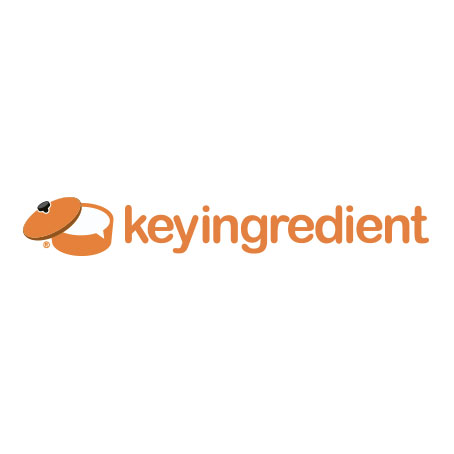New York Cheese Cake
By á-24544
 0 Picture
0 Picture
Ingredients
- Ingredients
- Crust
- 8 whole graham crackers , broken into rough pieces
- 1 tablespoon sugar
- 5 tablespoons unsalted butter , melted
- Filling
- 2 1/2 pounds cream cheese , cut into 1-inch chunks and softened
- 1 1/2 cups (10 1/2 ounces) sugar
- 1/8 teaspoon salt
- 1/3 cup sour cream
- 2 teaspoons lemon juice
- 2 teaspoons vanilla extract
- 6 large eggs plus 2 large yolks
- 1 tablespoon unsalted butter , melted
Details
Preparation
Step 1
Instructions
Prep
1. Adjust oven rack to lower-middle position and heat oven to 325 degrees.
Prepare Crust
2. PREPARE CRUST: Break 8 whole graham crackers into rough pieces and place in food processor. Process graham crackers to fine crumbs, about 30 seconds.
3. Combine graham cracker crumbs and 1 tablespoon granulated sugar in medium bowl, add 5 tablespoons melted butter, and toss with fork until evenly moistened.
4. Empty crumbs into 9‑inch springform pan.
5. Using bottom of ramekin or dry measuring cup, press crumbs firmly and evenly into pan bottom, keeping sides as clean as possible.
6. Bake crust until fragrant and beginning to brown around edges, about 13 minutes.
7. Let crust cool in pan on wire rack while making filling.
Prepare Filling
8. PREPARE FILLING: Increase oven temperature to 500 degrees.
9. Using stand mixer fitted with paddle, beat softened cream cheese on medium-low speed until broken up and slightly softened, about 1 minute. Scrape down bowl.
10. Add 3/4 cup granulated sugar and 1/8 teaspoon salt and beat on medium-low speed until combined, about 1 minute.
11. Scrape down bowl, then beat in remaining 3/4 cup granulated sugar until combined, about 1 minute.
12. Scrape down bowl, add 1/3 cup sour cream, 2 teaspoons lemon juice, and 2 teaspoons vanilla, and beat on low speed until combined, about 1 minute.
13. Scrape down bowl, add 2 large egg yolks, and beat on medium-low speed until thoroughly combined, about 1 minute.
14. Scrape down bowl, add 6 whole eggs, 2 at a time, beating until thoroughly combined, about 1 minute, and scraping bowl between additions.
15. Being careful not to disturb baked crust, brush inside of pan with 1 tablespoon melted butter and set pan on rimmed baking sheet to catch any spills in case pan leaks.
Bake Cheesecake
16. BAKE CHEESECAKE: Pour filling into cooled crust. Slide baking sheet into oven and bake for 10 minutes.
17. Without opening oven door, reduce temperature to 200 degrees.
18. Continue to bake until cheesecake registers about 150 degrees, about 1 1/2 hours.
19. Let cake cool on wire rack for 5 minutes, then run paring knife around cake to loosen from pan.
20. Let cake continue to cool until barely warm, 2 1/2 to 3 hours. Wrap tightly in plastic wrap and refrigerate until cold, at least 3 hours or up to 4 days.
21. To unmold cheesecake, wrap hot kitchen towel around pan and let stand for 1 minute.
22. Remove sides of pan. Slide thin metal spatula between crust and pan bottom to loosen.
23. Slide cake onto serving platter. Let cheesecake sit at room temperature for about 30 minutes before serving.
Total Time: 9 hours
Preparation Time: 10 minutes
* You can’t make a cheesecake without a springform pan. Unlike many other cheesecakes that require a water bath to modulate the oven temperature, this recipe starts the cheesecake in a very hot oven to create a bronzed top and then quickly calls for reducing the oven temperature to 200 degrees. The springform pan should be placed on a rimmed baking sheet to catch any drips or leaks.
* * Just before the baked and cooled crust is filled, it’s a good idea to brush the inside of the springform pan (the part without any crust) with a little melted butter. This butter will help keep the cheesecake from sticking terribly to the metal. Use a pastry brush to spread the melted butter evenly, and make sure not to disturb the baked crust.
* * * If you overcook any cheesecake, the eggs will curdle and an unsightly crack will develop in the middle. If you don’t rely on an instant-read thermometer, there is no reliable way to gauge doneness. (The toothpick test won’t tell you much, and the appearance of the cheesecake is only mildly suggestive.)
* * * * While overbaking will certainly cause a crack to develop, so too can improper cooling. As the cheesecake cools, the surface tension can increase, especially if the sides of the cake are stuck to the pan. The cake wants to shrink but it can’t because the sides are firmly affixed to the pan. Eventually surface tension causes the cheesecake to crack. You can prevent this by running a paring knife around the inside of the pan 5 minutes after it comes out the oven. This frees the cake from the pan and allows it to contract as it cools.
* * * * * To transfer the cheesecake to a platter, you need to slide a thin metal spatula under the crust. We find that a large offset spatula (the tool we use for frosting cakes) is perfect for this job.
Review this recipe